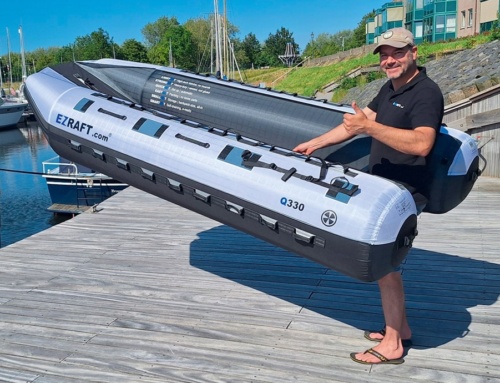This NEW EPIRB offers extra peace of mind with its NFC technology.
The GlobalFix V6 is ACR’s latest EPIRB. Like all EPIRBs, it transmits on 406MHz to the international global Cospas-Sarsat satellite system and then relies on a 121.5MHz homing signal to guide the rescue services when they are close. Visible and infrared strobe lights also aid identification at night, or when visibility is limited by weather.
The GlobalFix V6 has a Return Link Service (RLS) that provides visual confirmation to the user that their distress message has been received. The RLS signal is sent back through the European Galileo satellite network, confirming that the Mayday signal, including the location, has been delivered. A flashing blue light indicates the EPIRB’s successful reception of the Return Link message, so there can be no mistake in potentially poor weather conditions.

The app enables you to keep tabs on your EPIRB.
All EPIRBs accurately derive their positions globally through the GNSS, or Global Navigation Satellite System to use its full title, which comprises four satellite navigation systems: the US GPS, the European Galileo, the Russian GLONASS and a recent new addition from China, the BeiDou system.
Triggering the device produces a digital Mayday and the location of the beacon, accurate to within 100 metres. This Mayday is received by the worldwide Cospas-Sarsat search and rescue satellite network. Position information and vessel identification are then relayed by the satellites to the relevant ground stations. This ultimately helps in deciding on the scope of the rescue operation to be launched. Once the EPIRB has been activated, the shorter-range 121.5MHz homing signal is transmitted in addition to the higher-frequency satellite signal. This 121.5MHz homing signal aids rescuers in finding the device when they arrive upon the rescue scene, which is particularly important if the beacon has drifted from its original location.

The Category 2 version has an enclosed mounting bracket requiring manual release.
A new feature called ‘Near-Field Communication’ (NFC) lets users monitor their EPIRB’s functions using a smartphone app. With ACR’s free smartphone app and NFC technology, users can easily access EPIRB diagnostics. Placing a smartphone adjacent to the GlobalFix V6 EPIRB opens the ACR product app, exhibiting EPIRB data. The app shows the current battery life of the beacon, the number of GNSS and self-tests completed, and the length of time the EPIRB has been activated. Users can see detailed information on each self-test and GNSS test performed by the device. GNSS tests include a map view demonstrating where previous tests were conducted, as well as the date and time of the tests. The app will also tell you how long it took the EPIRB to get a fix, the number of satellites used to obtain that fix and its accuracy. NFC allows users to routinely check the status of all EPIRB functions to ensure they are working properly and ready to go.
Long-life lithium batteries with a 10-year shelf life provide at least 48 hours of transmission, and the GlobalFix has a five-year warranty. The beacon is waterproof to a depth of 33ft for five minutes and is available with a Category 1 float-free bracket or a Category 2 manual bracket – both of which provide automatic activation upon immersion. There is also a Class 3 version, which can only be manually activated.
Contact: www.acrartex.com
View all our featured ACR articles










